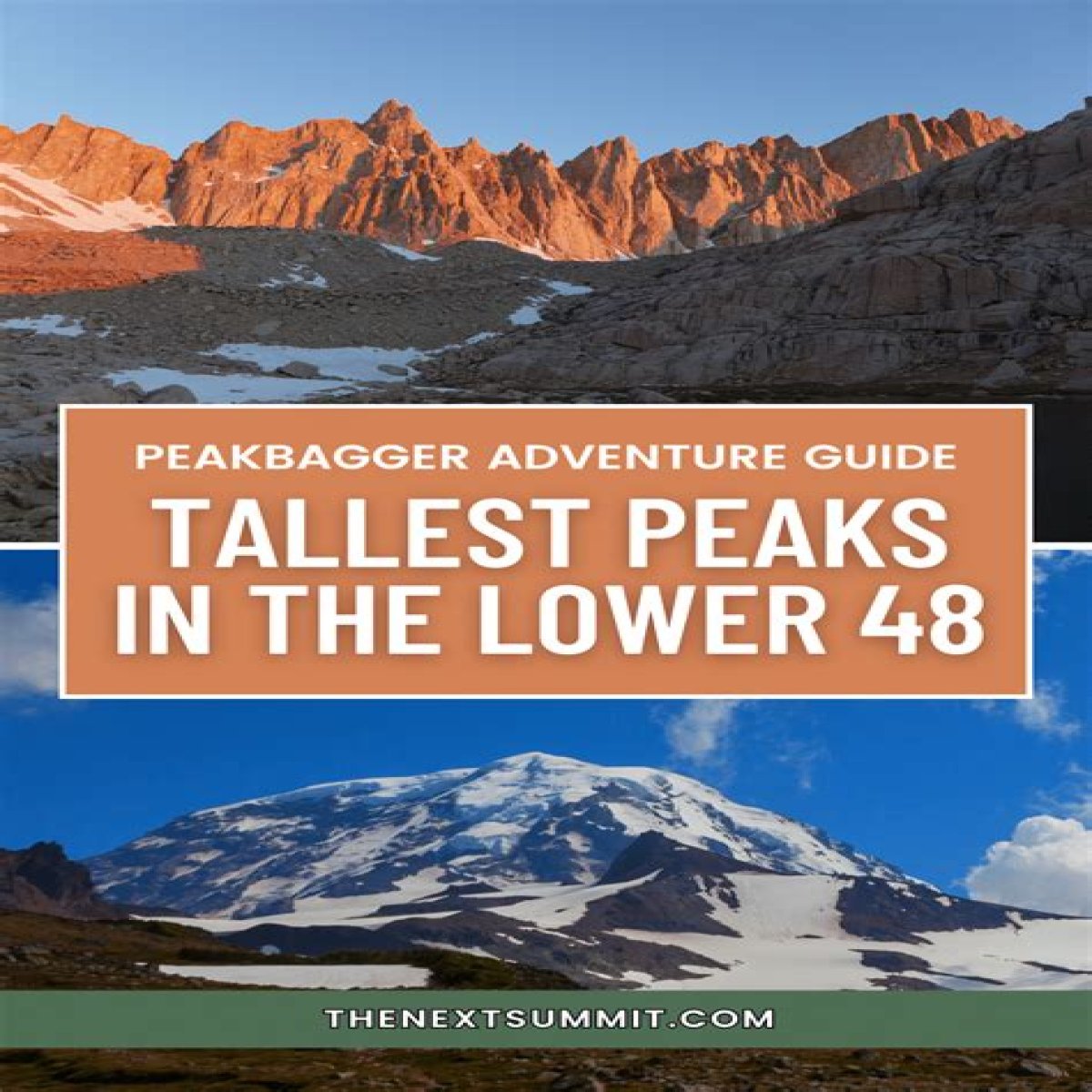When it comes to the highest mountains in the contiguous United States, the state that takes the crown is Colorado. Nestled in the heart of the Rocky Mountains, Colorado boasts several towering peaks that reach over 14,000 feet (4,267 meters) in elevation, also known as “14ers.” These majestic mountains attract both experienced mountaineers and avid hikers seeking breathtaking panoramic views.
The most renowned mountain in Colorado is Mount Elbert, standing tall at an impressive height of 14,440 feet (4,401 meters). As the highest summit in the Rocky Mountains, Mount Elbert poses a thrilling challenge for adventurers looking to conquer its summit. But Colorado is home to numerous other notable peaks, including Pikes Peak, Mount Evans, and Longs Peak, each offering its own unique beauty and allure.
FAQs about the Highest Mountains in the Lower 48 States:
1. Are the Colorado 14ers difficult to climb? Yes, climbing Colorado’s 14ers can be challenging, requiring good physical fitness and proper acclimatization to the high altitude. Some peaks have more technical routes, while others are more accessible for hikers with basic experience.
2. How many 14ers are there in Colorado? Colorado boasts an impressive total of 58 mountains that surpass the 14,000-foot mark. This abundance of 14ers provides ample opportunities for mountaineers and adventurers to test their skills.
3. What is the highest mountain in the Continental United States? Mount Whitney, located in California, is the highest mountain in the continental United States, reaching an elevation of 14,505 feet (4,421 meters).
4. Can I hike the Colorado 14ers all year round? While it is possible to attempt some 14ers year-round, most hikers prefer the summer months when snow has melted, and the weather is more favorable. Snow and winter conditions can make climbing more challenging and dangerous.
5. Are there any guided tours available for climbing Colorado’s 14ers? Yes, there are various guided tours and outfitters that offer assistance and guidance for climbing Colorado’s 14ers. These guided expeditions can be a valuable resource for those seeking a safe and well-planned ascent.
6. What is the average time to summit a Colorado 14er? The time it takes to summit a 14er varies depending on factors such as the chosen route, hiker’s fitness level, and weather conditions. On average, it can take between 6 to 10 hours for a round-trip hike, including breaks.
7. What essentials should I pack for a Colorado 14er hike? Some essential items to pack for a 14er hike in Colorado include proper hiking boots, layered clothing, a map and compass, sun protection, plenty of water, food/snacks, and a first aid kit.
8. Can I bring my dog on a Colorado 14er hike? While dogs are allowed on many Colorado trails, it’s essential to check individual trail regulations. Some 14er routes may not be suitable for dogs due to steep and rocky terrain, so it’s crucial to prioritize your dog’s safety and well-being.
9. Are there any dangers associated with climbing Colorado’s 14ers? Yes, climbing 14ers can pose certain risks, including altitude sickness, inclement weather, exposure to steep slopes, and loose rock. It’s vital to research and prepare adequately, including assessing your own fitness level and experience.
10. Can I camp on Colorado’s 14ers? Camping is allowed in the surrounding areas of many Colorado 14ers. However, it’s important to follow designated camping regulations and practice leave-no-trace principles to minimize environmental impact.
11. What precautions should I take for high-altitude hiking? Prior to high-altitude hiking, it’s recommended to acclimatize by spending a few days at a lower elevation, staying hydrated, and avoiding rapid ascents. Recognizing the symptoms of altitude sickness is crucial, and descending to a lower altitude if necessary.
12. Are there hiking trails for beginners in Colorado? Yes, Colorado offers hiking trails suitable for beginners, ranging from easy to moderate difficulty levels. It’s important to choose trails within your capability and gradually progress as you gain experience and confidence.
Remember, while Colorado may be the state with the highest mountains in the lower 48, each of these majestic peaks demands respect and careful preparation. Whether you’re an experienced mountaineer or a novice hiker, venturing into these lofty heights promises unforgettable adventures and awe-inspiring natural beauty.
